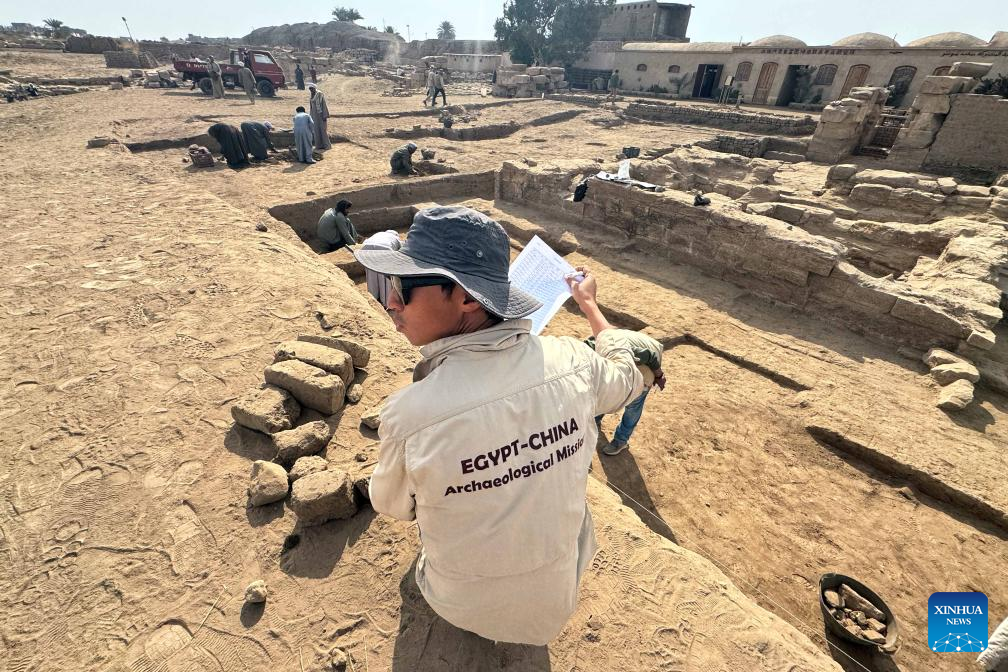by Ahmed Shafiq
LUXOR, Jan 25 (NNN-XINHUA) – The winter sunlight slanted across the ancient stones of the Montu Temple, casting long, ethereal shadows that danced across weathered hieroglyphs and crumbling limestone. Wisps of desert dust swirled around the feet of Egyptian and Chinese archaeologists, who moved with meticulous precision across the archaeological site in Luxor’s sprawling Karnak Temple Complex.
In the crisp morning air, the falcon-headed god Montu seemed to watch silently as international teams carefully brushed away centuries of accumulated history. The temple – a forgotten sanctuary nestled within the complex – had long been shrouded in silence, its secrets waiting patiently beneath layers of accumulated earth and time.
Now, thanks to a groundbreaking agreement between the Egyptian Ministry of Antiquities and the Chinese Academy of Social Sciences (CASS), the joint mission was breathing new life into this forgotten sanctuary.
“This mission, the first of its kind, has presented unique challenges and exciting opportunities,” said Jia Xiaobing, the Chinese head of the project and a scholar from CASS, in an interview at the site. Cultural differences, he noted, have been bridged by a shared passion for history and mutual respect for expertise.
When the Chinese team first arrived in 2018, the Montu Temple area was an untamed landscape: overgrown with wild grasses, obscured by dust from previous excavations, and cluttered with abandoned offices. It looked nothing like the bustling work site it is today.
The excavation focused on two primary areas. The first, centered on the Osirian Temple, had already revealed three of six chapel structures. Mud-brick walls previously unknown to scholars emerged from their long slumber, each stone a potential narrative waiting to be decoded.
The second area, positioned between the Montu and Maat Temples, promised insights into the complex architectural and religious relationships of ancient Egyptian societies, the Chinese archaeologist said.
Jia emphasised the long-term nature of the Chinese presence in Egypt, with plans for continued work at the Montu Temple and potential expansion to other sites. He stressed the significance of the Sino-Egyptian archaeological collaboration, drawing parallels between the long histories and rich archaeological traditions of both nations.
“Through their joint efforts, Egyptian and Chinese archaeologists are not only unearthing the secrets of the Montu temple, but also fostering greater understanding and cooperation between their nations,” he said.
The mission has become a model of synergy. The Chinese team’s meticulous documentation and use of cutting-edge technology complement the invaluable local expertise of their Egyptian counterparts. “They are doing a great job here,” said Aboul-Hassan Ahmed, an inspector of antiquities with the mission. “They are very cooperative and keen to understand our ancient civilisation.”
For the local community, these efforts represent more than academic interest – they’re an economic lifeline. Mohammed Farouk, head of the Egyptian-Chinese excavation workers, pointed out that the mission employs 60 workers each season. “This work isn’t just beneficial for Egypt or humanity,” he emphasised, “but crucial for the local Luxor community, supporting 60 families.”– NNN-XINHUA





